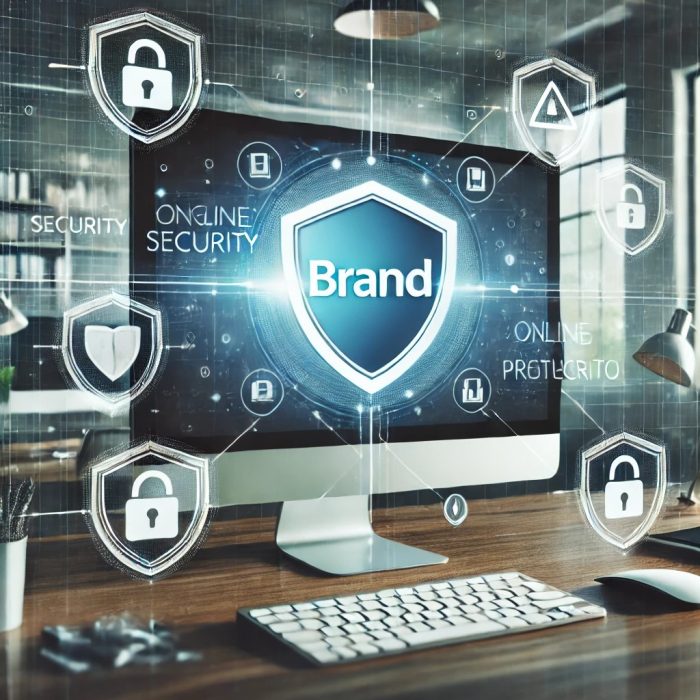In today’s digital world, protecting your brand online is essential. A domain name is not just a web address but a strategic asset that symbolizes the identity and reputation of your company. Increasingly, brands face online abuse and threats, highlighting the importance of domain name monitoring and protection. In this article, we will discuss the importance of this protection and the measures to implement to safeguard your brand’s reputation and assets.
Sommaire
Why Protect Your Brand Online?
A domain name is more than just an address. It is a pillar around which an entire brand’s digital presence is built. It is the first thing to secure when launching a project, and it becomes the central point of communication with clients and partners. However, despite its importance, it is not always as well protected as it should be, exposing the company to various risks.
Among the main forms of domain name abuse are:
- Typosquatting: The registration of domain names similar to the brand’s by modifying a few characters (e.g., a common typo). Users may be redirected to malicious or competing sites.
- Combosquatting: A technique that goes beyond simple typosquatting by adding keywords around the brand’s name, such as “outlet,” “discount,” or “promo.” This strategy aims to deceive consumers into believing they are on an official brand site.
- Keywordsquatting: The registration of domain names without explicitly mentioning the brand but using generic terms related to the sector or user experience (such as “renewal” or “package”).
- Cybersquatting: This involves registering domain names identical or confusingly similar to trademarks, company names, or personal names with the intent of profiting by selling them back to the rightful owner or leveraging the brand’s reputation.
- Domain Hijacking: This is an unauthorized takeover of a registered domain name. Hackers gain control over the domain by exploiting vulnerabilities or through social engineering tactics, which can lead to traffic loss, data breaches, and brand damage.
The consequences of these abuses can be severe: financial losses, damage to reputation, loss of customer trust, and even security and data protection issues.
How to Protect Your Brand Online
To effectively protect your brand online, it is crucial to implement a proactive strategy. Here are some key measures:
- Preventive Registration: It is advisable to target a wide range of extensions (TLD – Top-Level Domains) when registering the domain name. By securing registration across multiple extensions, you reduce the risk of another company registering a domain name similar to your brand.
- Domain Name Monitoring: Brand protection does not stop at simple registration. Continuous domain name monitoring is vital to detect potential abuse. This allows you to identify keyword combinations, variants, additions, or even words associated with promotions. With advanced technologies, it is possible to conduct in-depth searches to detect potential threats before they become active.
- Tracking Threat Evolution: When a potentially fraudulent domain name is detected, it is not always immediately active. Regular monitoring of these domain names is necessary to assess the level of risk. Surveillance algorithms can identify the level of threat even if the website has not yet been launched.
How to Respond to an Infringement
Despite proactive monitoring, abuses can occur. In this case, several remedies are available:
- Recovery Strategy: The first step is to implement a strategy for recovering the domain name in question. Companies specializing in brand protection, such as IPzen, have legal experts to assist brands in recovery procedures.
- Legal Actions: Several procedures exist to recover an abusive domain name:
– UDRP (Uniform Domain-Name Dispute-Resolution Policy): A dispute resolution procedure for generic domain names (gTLDs) such as .com, .net, etc.
– URS (Uniform Rapid Suspension System): A faster and less expensive procedure that only allows for the suspension of the domain name, not its transfer.
– National Legal Procedures (ADR): For certain country code domain extensions (ccTLDs), specific recourses exist according to local legislation.
- Takedown : Suspending a website and removing its content is a quick and cost-effective measure. However, it depends on the cooperation of third parties, particularly hosting providers.
- Anonymous Domain Name Purchase : In some cases, it may be better to buy the fraudulent domain name. Anonymity is crucial during this process to avoid price inflation.
Conclusion
Protecting your brand online is a major challenge in today’s digital world. Domain name abuses can lead to significant financial, reputational, and trust damage. Therefore, it is essential to adopt a proactive protection strategy, including preventive registration, continuous monitoring, and effective response mechanisms.


